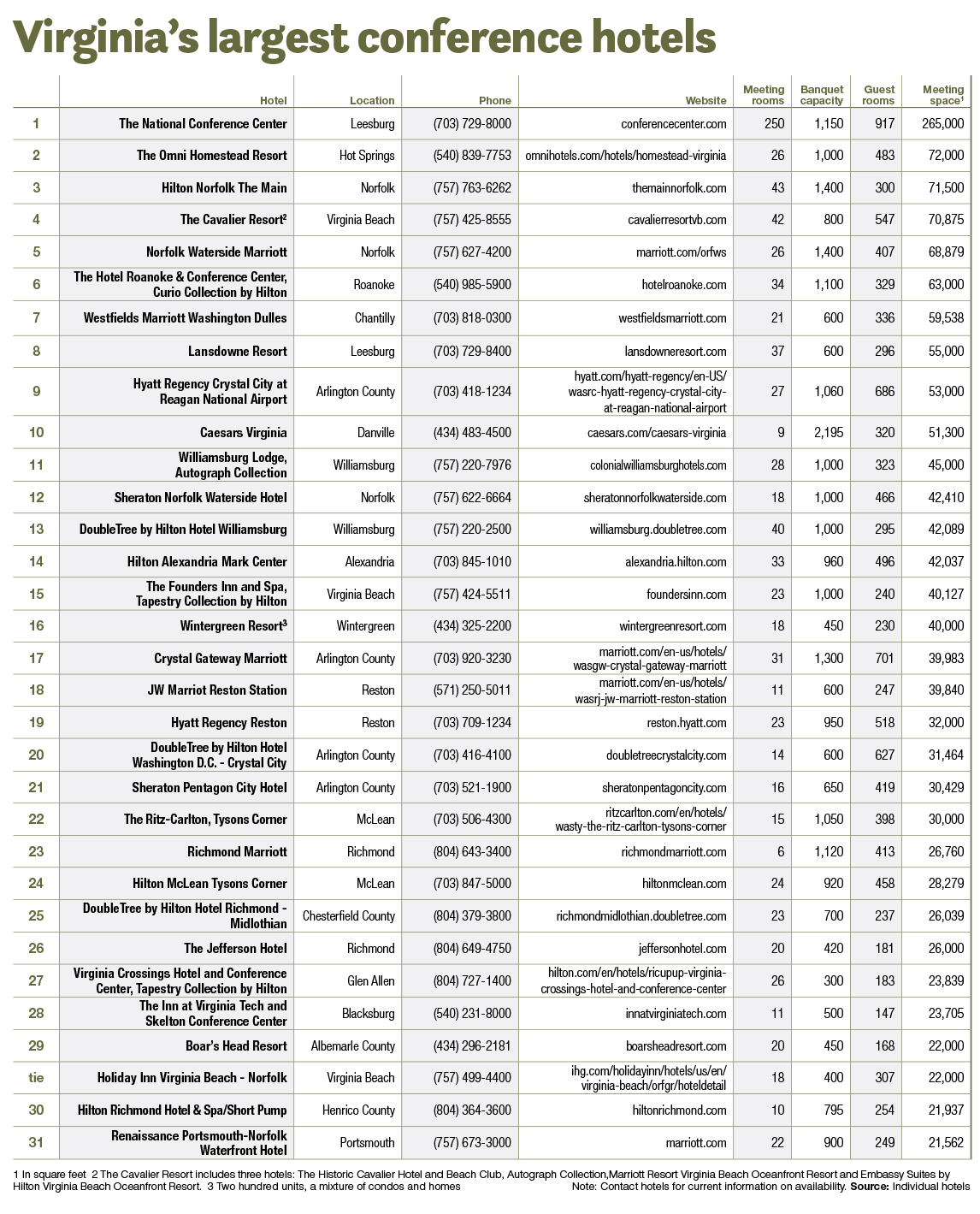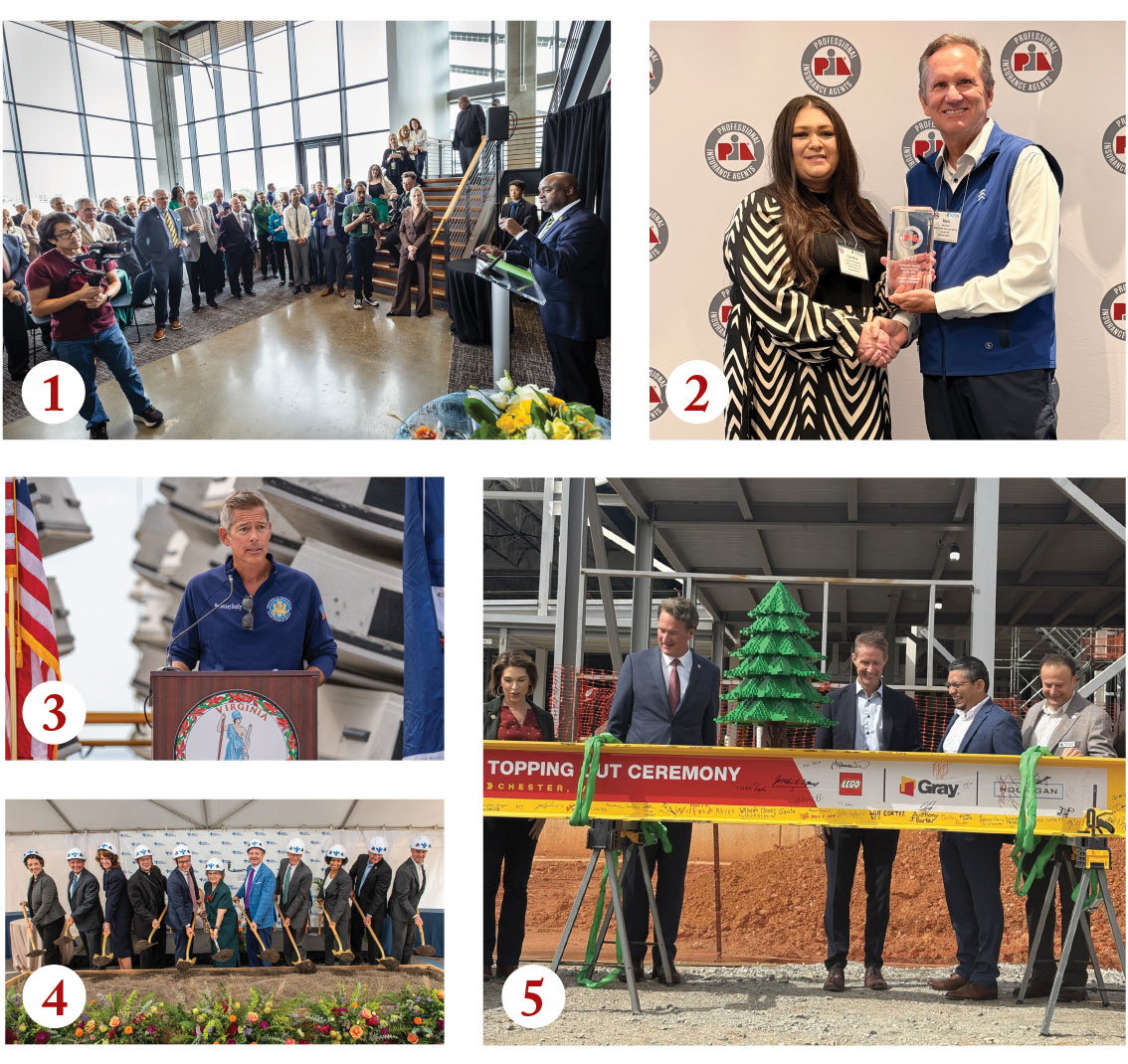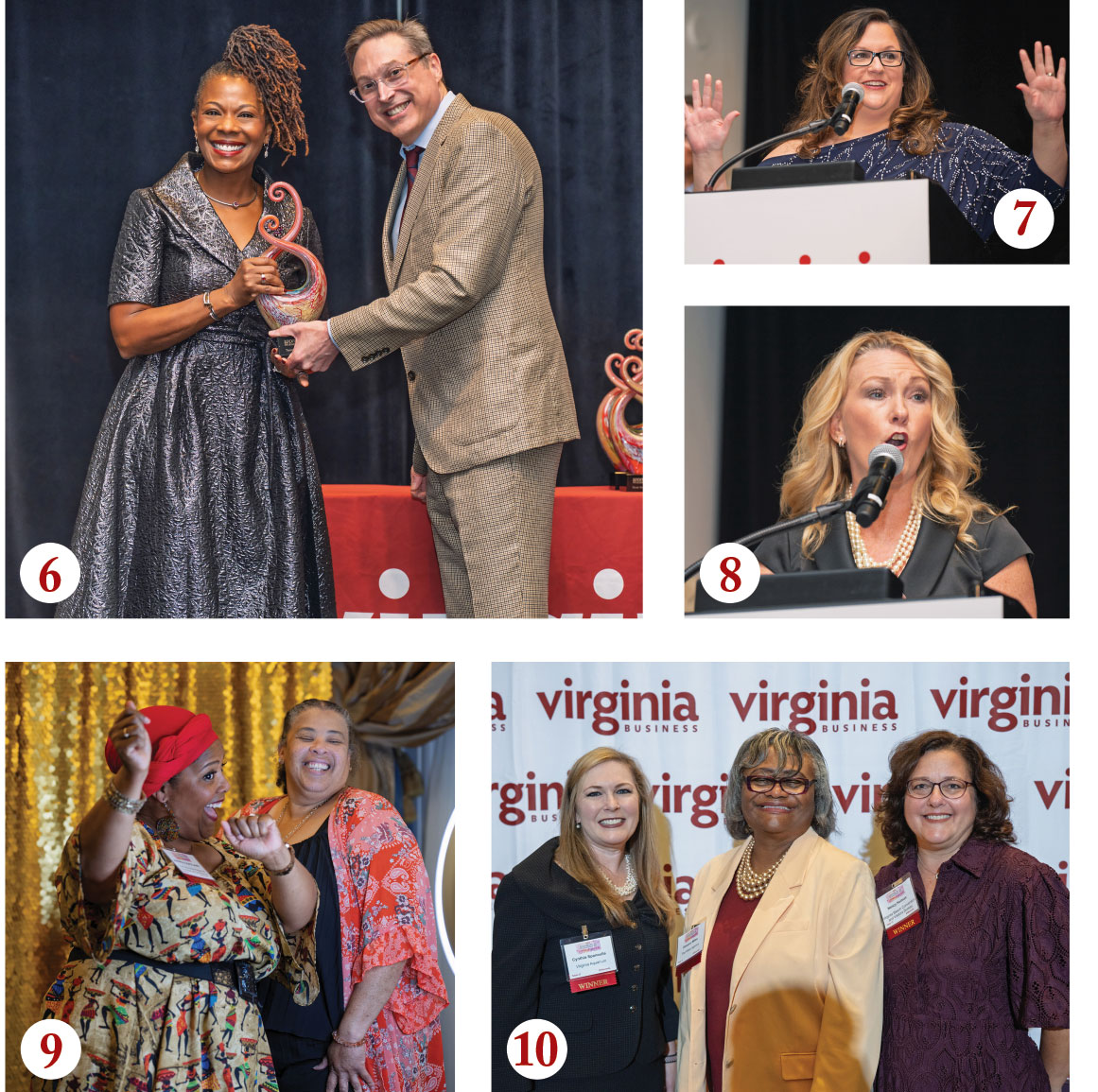Central Virginia
On Oct. 9, AstraZeneca announced it will invest $4.5 billion to establish two pharmaceutical manufacturing facilities in Albemarle County, with plans to create 600 jobs. According to Gov. Glenn Youngkin’s office, the project includes a new drug substance manufacturing facility focused on chronic diseases and a facility dedicated to antibody-drug conjugates focused on therapies for oncology indications. The project will be located at the Rivanna Futures Site located in Albemarle’s northern portion. The $4.5 billion is part of AstraZeneca’s plan to invest $50 billion in the United States by 2030. (VirginiaBusiness.com)
Dover Food Retail announced in September it would invest over $20 million to expand its Virginia operations, adding 300 jobs in Chesterfield County. The Georgia manufacturer is relocating manufacturing of its Anthony brand of commercial refrigerator and freezer glass doors and frames from Los Angeles to the company’s Chesterfield campus. Dover Food Retail is a manufacturer of commercial and industrial refrigeration systems, refrigerated display cases, specialty products, glass and freezer doors and lighting. It operates through its core brands, Anthony and Hillphoenix, and has more than 3,000 employees. (VirginiaBusiness.com)
Massachusetts-based Commonwealth Fusion Systems in September received approval needed for its planned Chesterfield County facility that’s expected to be the world’s first grid-scale commercial nuclear fusion power plant. The county’s board of supervisors approved a conditional use permit for the facility at the 94-acre site in the James River Industrial Center. CFS plans to build a 400-megawatt facility, dubbed ARC, at a cost likely to exceed $2.5 billion. CFS plans to begin construction in the late 2020s and expects ARC to begin generating carbon-free power for the grid in the early 2030s. (VirginiaBusiness.com)
In early October, Richmond Mayor Danny Avula sent a letter to Gov. Glenn Youngkin requesting $80 million in state funds over the next two years for “critical projects that will enhance regional resiliency of the Richmond waterworks.” The figure represents 5.7% of the $1.4 billion in water infrastructure investments Avula said are planned for the region in the next decade. State funding would help alleviate the growing financial burden on the city’s utility ratepayers, Avula said. Youngkin is scheduled to propose Virginia’s next two-year budget in December. (Richmond Times-Dispatch)
The Virginia state government rejected a Certificate of Public Need request from Bon Secours’ St. Francis Medical Center to add 36 medical surgical beds to its Midlothian facility, saying that there isn’t enough need for them. Nevertheless, the health system has refiled its application in full. Bon Secours needed approval to add two floors to an existing inpatient tower that would house the 36 beds, along with four more intensive care unit (ICU) beds. The project’s estimated cost is $106 million. The state health commissioner approved the part of the request allowing for the four ICU beds. (VirginiaBusiness.com)
PEOPLE
Chesterfield County engineering and design firm Timmons Group announced in September that it has appointed Tim Asimos as chief marketing officer, a newly created executive role. In the role, Asimos will have oversight of the firm’s brand and lead its communications, business development and pursuits teams. Asimos has more than 20 years of experience in architecture, engineering and construction. He was most recently head of growth at Client Savvy. He previously worked for Timmons, serving in a marketing management role from 2006 to 2012. Timmons has 21 offices throughout the mid-Atlantic, Southeast and West, Midwest and Southernregions. (VirginiaBusiness.com)
Eastern Virginia
Norfolk-based Colonna’s Shipyard, the oldest continuously operating family-owned shipyard in the United States, announced it has invested $79 million to build its fourth drydock. According to an October news release from the shipyard, the new drydock in Norfolk is expected to have an approximate lifting capacity of 25,000 tons and will allow Colonna’s to improve capabilities in providing ship repair and maintenance services to maritime clients. The new drydock, under construction and slated for delivery in the first half of 2028, will be 147 feet wide and 725 feet long. (VirginiaBusiness.com)
The Hampton Roads economy grew for the fourth consecutive year in 2024. However, area economists warn that the region is overly reliant on federal spending, placing its economic health at risk in the event of future cuts. The analysis was released in early October in an annual State of the Region report from Old Dominion University’s Dragas Center for Economic Analysis and Policy. The report anticipates that the federal deficit, projected to reach $2 trillion in fiscal year 2026, will continue to rise. It encouraged the region to diversify its economy for long-term prosperity. (VirginiaBusiness.com)
Newport News city leaders in October unveiled a list of 12 sites they want to see developed or redeveloped, floating concepts such as a data center near Fort Eustis, a relocated City Hall and new downtown housing and retail. Officials discussed the properties during the Newport News Economic Development Growth & Expansion (EDGE) summit at City Center, with city staff pitching the sites to an audience that included regional developers. Within the following year, the city plans to seek development proposals for many of the targeted parcels and find ways to complement what’s already in the city. (VirginiaBusiness.com)
Norfolk will soon see a major boost in cruising activity, with Carnival Cruise Line’s popular ship Carnival Freedom homeporting there in 2027 and Norwegian Cruise Line’s Norwegian Pearl making 20 calls that same year. Carnival Cruise announced the news in September. The 100,000-ton Carnival Freedom will reposition from Port Canaveral to Norfolk in May 2027, establishing a new homeport. Carnival Freedom, a newer ship, will replace Carnival Sunshine for service in Norfolk. The Carnival Sunshine has been operating weekly, year-round sailings from Norfolk since February. Carnival Freedom’s itineraries will include cruises to the Bahamas, Bermuda, Eastern Caribbean and Canada. (VirginiaBusiness.com)
Sentara Health will lay off 220 employees — including 127 in Virginia — as part of a restructuring tied to its decision to drop some Medicare Advantage plans in Virginia, North Carolina and Florida. The removal of these plans will impact 28,961 insurance members statewide. A Sentara spokesperson said the plans were dropped because they were no longer financially sustainable, citing industry-wide headwinds, such as reimbursement trends and regulatory changes. An Oct. 3 letter sent in compliance with the Worker Adjustment and Retraining Notification Act says the Virginia layoffs will begin on Dec. 5 and be completed by April 10, 2026. (VirginiaBusiness.com)
U.S. Army Training and Doctrine Command shut down Oct. 1. The command is being combined with the Army Futures Command to create the new Training and Transformation Command, based in Austin, Texas. Established in 1973, TRADOC supported the Army by training over 750,000 soldiers and service members annually. It is still unknown how many of the civilians and soldiers from TRADOC’s Fort Eustis headquarters in Newport News will leave and if layoffs will occur. A spokesperson previously said TRADOC had approximately 2,000 military and civilians based at Fort Eustis, about 800 of whom were tied to the headquarters. (WHRO; VirginiaBusiness.com)
Northern Virginia
McLean-based candy and snacks giant Mars’ $36 billion bid to acquire Pringles and Pop-Tarts maker Kellanova was expected to clear a major hurdle by winning unconditional European Union antitrust approval, three people with direct knowledge of the matter said in early October. The European Commission warned in June that the deal could lead to price hikes and may boost Mars’ negotiating power with retailers, but it subsequently found insufficient legal grounds to demand concessions, the sources said. An EU decision is due by Dec. 19. (Reuters)
Congressional Democrats, including U.S. Sen. Tim Kaine, tied ABC late night host Jimmy Kimmel’s September suspension to the $6.2 billion Nexstar-Tegna acquisition, which requires approval from the Federal Communications Commission. Nexstar operates 28 ABC affiliates and is seeking to acquire Tysons-based Tegna, which owns 64 television stations across 51 markets. Kimmel, who returned to screens after a few days, made several remarks about the political reaction to conservative activist Charlie Kirk’s assassination. ABC placed Kimmel on indefinite suspension after Nexstar Communications Group said it would pull the show, followed shortly by Sinclair. FCC Chairman Brendan Carr cheered the moves by Nexstar and Sinclair, saying his agency had a strong case for holding Kimmel, ABC and network parent Walt Disney Co. accountable for spreading misinformation. (VirginiaBusiness.com; Associated Press)
The massive Prince William Digital Gateway data center campus, and the substantial private investment it represents, is at risk if an appeals court doesn’t put on hold a lower court’s recent voiding of the project’s 2023 rezonings, while a forthcoming appeal from the would-be developers is adjudicated. That’s according to a motion filed Sept. 26 in the Court of Appeals of Virginia from QTS Realty Trust, Compass Datacenters and the Prince William County government. In August, a circuit court judge annulled the rezonings, largely based on technical legal deficiencies in how and when the county advertised public hearings. (Washington Business Journal)
In September, a major ransomware attack against Collins Aerospace — a subsidiary of Arlington County-based Fortune 500 aerospace and defense contractor RTX — disrupted check-in and boarding systems at several airports across Europe over multiple days, with disruptions forcing delays and cancellations of flights. The disruptions meant that only manual check-in and boarding was possible. Collins, whose systems help passengers check themselves in, print boarding passes and check their luggage, cited a “cyber-related disruption” to its multi-user system environment (MUSE) software at “select airports.” (Associated Press)
President Donald Trump’s administration warned in early October of no guaranteed back pay for federal workers during a government shutdown, reversing what has been long-standing policy for some 750,000 furloughed employees, according to a memo being circulated by the White House. Trump signed into law after the longest government shutdown in 2019 legislation that ensures federal workers receive back pay during any federal funding lapse. But in the new memo, his Office of Management and Budget says back pay must be provided by Congress, if it chooses to do so, as part of any bill to fund the government. (Associated Press)
PEOPLE
Michael LaRouche succeeded Tom Watson asCEO of Herndon-based federal contractor Serco on Oct. 1. Watson stepped down after seven years with Serco, the North American subsidiary of British parent company Serco Group. LaRouche most recently was founder and president of Emalar, a tech company focused on national security, and was president of the Science Applications International Corp.’s national security and space sector. (VirginiaBusiness.com)
Roanoke/ Lynchburg/ New River Valley
A BWX Technologies subsidiary was awarded a $1.5 billion contract from the National Nuclear Security Administration to help the United States establish domestic uranium enrichment capability for defense, the Lynchburg-based nuclear components manufacturer announced Sept. 16. BWXT Enrichment Operations will design, build and operate the Domestic Uranium Enrichment Centrifuge Experiment (DUECE) pilot plant at BWXT’s nuclear fuel services site in Erwin, Tennessee. To support this work, BWXT began construction in June on a centrifuge manufacturing development facility in Oak Ridge. (VirginiaBusiness.com)
The Franklin County Board of Supervisors shot down a proposal for a new solar farm in Henry after significant community pushback at a public hearing held Sept. 14. Robin Ridge Solar was proposing a 35-megawatt solar generation facility on a 376-acre property near the former Henry Elementary School. Plans called for placing solar panels on 121 acres of the site for energy storage to supplement Appalachian Power’s transmission system. Supervisors voted 5-1 against the proposal. Blue Ridge District representative Tim Tatum was absent.
(The Roanoke Times)
Before the April fire that devastated Noke Van Co. and the company’s warehouse at the Riverdale industrial site, multiple Roanoke officials had known for more than a year that the entire property was in violation of fire code and was not connected to water for fire suppression, according to documents obtained by Cardinal News. Workers had turned off the valves connecting water to the center’s fire suppression systems before the fire, a July 2025 statement from Riverdale Southeast, the entity that owns the property, stated. The statement also noted Noke Van’s owners had not been made aware of the “historic water line failure.” (Cardinal News)
CommuteAir ERJ145 Flight 4339, operating as United Express, “landed long” as it arrived at Roanoke-Blacksburg Regional Airport at about 10 p.m. on Sept. 24, according to a Federal Aviation Administration statement. It was safely stopped by an engineered materials arresting system bed at the end of the runway. The safety area made of cellular cement blocks meant to slow and stop an aircraft that overruns the runway was upgraded last year and performed as intended, according to an airport spokesperson. There was heavy rain in the area at the time of the incident. (Associated Press)
Virginia Tech’s board of visitors approved the addition of $229.2 million to the university’s athletic department funding over the next four fiscal years in a 13-1 vote during a Sept. 30 virtual meeting. The athletic operating budget will jump to $190.1 million for the current fiscal year and increase to more than $200 million for each of the next three years. Those figures would give Tech one of the highest athletic operating budgets in the Atlantic Coast Conference. The funding plan calls for student fees to increase by $100 apiece in fiscal years 2027, 2028 and 2029. (The Roanoke Times)
PEOPLE
In late September, the Branch Group announced that CEO Bob Wills plans to step down from leading the Roanoke-based, employee-owned construction firm before the end of 2026. Jason Hoyle has been promoted to the newly created position of chief operating officer and is expected to succeed Wills as Branch’s next CEO under the company’s succession plan. Wills was promoted from chief financial officer to Branch’s CEO in September 2024. (VirginiaBusiness.com)
Shenandoah Valley
Frederick County Economic Development Authority has launched a $200,000 scholarship initiative to help county residents access affordable training in high-demand skilled trades. The money will assist residents pursuing certain FastForward credential programs offered at Laurel Ridge Community College. The scholarship program focuses on sectors targeted for growth by the EDA: electrical and HVAC apprenticeships, welding, heavy equipment operation and mechatronics. Funds will remain available until exhausted or June 30, 2026, whichever comes first. The EDA’s initiative helps address a surge in enrollment in FastForward, a workforce training initiative from Virginia’s community colleges. (News release)
A rezoning application process for land in downtown Harrisonburg for The Link, a proposed six-story, high-density apartment complex, will have to restart after officials discovered a July Planning Commission meeting wasn’t properly noticed. A new hearing, expected to occur this fall, will reconsider rezoning the Lindsey Funeral Home site, allowing high-density development.Developer Timberwolf Capital Partners has proposed building up to 265 apartments,
2,000 square feet of commercial space and at least 400 off-street parking spaces. The project has faced fierce opposition from hundreds of residents in downtown Harrisonburg, with traffic being a big concern. (Daily News-Record)
In September, The New York Times named Maude & the Bear, a restaurant in Staunton, as one of the top 50 restaurants in the United States. Chef and owner Ian Boden repurposed a 2,500-square-foot 1926 Montgomery Ward kit house into a modern restaurant and inn. Maude serves a tasting menu Thursday through Saturday by reservation and a multicourse breakfast for inn guests only. The Times said the restaurant demonstrates “a deep understanding of how to merge exceptional seasonal ingredients into dishes of novel complexity.” The menu evolves regularly based on seasonality. (The New York Times)
NextEra Energy Transmission in September unveiled a proposed route for a 107.5-mile, 500-kilovolt transmission line, the Mid-Atlantic Resiliency Link, which would stretch from Dunkard Township, Pennsylvania, to the Gore substation in Frederick County. The line aims to meet the region’s energy demands identified by regional grid operator PJM Interconnection. The line connects to FirstEnergy’s Gore-Doubs-Goose Creek Improvement Project, which upgrades transmission lines to 500 kV between Gore and a substation in Loudoun County. The projects need approval from the state corporation commissions in each state the lines would pass through. NextEra wants to start construction of the line in 2029.
(The Winchester Star)
Waynesboro received a $50,000 state grant to start at least three new businesses in the city’s Rockfish Gateway area, which attract tourists from Shenandoah National Park. The money was secured through the Community Business Launch Program from the Department of Housing and Community Development. Greg Hitchin, Waynesboro’s director of economic development and tourism, said a contest will open in November where people can submit business ideas. Those who submit ideas can attend a seven-week business planning class and any business that completes that class can give a presentation. The city will pick at least three businesses to receive the funding. (WHSV)
PEOPLE
Retired Shenandoah University President James A. “Jim” Davis, a former state delegate who led the institution through a period of major growth from 1982 to 2008, died Oct. 7 at age 80. Davis was the Winchester university’s 15th president, joining when it was still Shenandoah College and Conservatory. Under his leadership, the institution achieved university status in 1991. During Davis’s tenure, enrollment grew from 874 to about 3,300 students, while SU’s endowment expanded from $500,000 to more than $50 million. The university’s campus footprint also nearly tripled under his leadership — from 45 to 123 acres, with more than 20 new buildings added. (VirginiaBusiness.com)
Southern Virginia
In early October, financially strapped Averett University received three requested consents from the majority of holders of about $13.3 million in bonds, including one that will allow the private university to move forward with a proposed $18.15 million sale-leaseback deal of its North Campus. Averett is working to weather a money crisis that first came to light in 2024. The university also asked bondholders to waive defaults due to it not meeting the required financial metrics and a default due to not meeting a deadline for filing an audited financial report. (VirginiaBusiness.com)
In Chase City, the Robert E. Lee Community Building is one step closer to being converted into market-rate apartments after the Virginia Tobacco Region Revitalization Commission staff on Sept. 23 recommended approval for up to $4 million in low-interest loans to fund the project. The Chase City Industrial Development Authority sought the loan on behalf of Petersburg-based developer Edwin Gaskin of Echelon Resources. Echelon plans to convert the former school building into 17 apartments, with the potential for adding more units in a second phase. (The Mecklenburg Sun)
The former Western Sizzlin building, which opened on Danville’s Riverside Drive in 1978 and closed in 2024, came tumbling down in early October to make way for a new coffee shop. The 1.11-acre property recently sold for $900,000 from The Daniel Group to 7B Real Estate BT Holdings. The group plans to build a 7 Brew drive-thru coffee shop. Wyatt Poats, who handled negotiations for the seller, is working with 7 Brew to bring more locations to Virginia. (Danville Register & Bee)
The Laurel Hotel is slated to open in late 2025 in the former Dan River Co. office building, which once housed offices for Dan River Mills executives. Featuring 36 rooms, the hotel is located near Caesars Virginia. Designed by Lockwood, Greene & Co., a New England-based firm that planned many mills, the building is an example of Italian Renaissance Revival style. The hotel is part of the Danville Hotel Collection, which is owned by Roanoke developer Ed Walker and also includes The Holbrook Hotel and The Bee. (News release)
Martinsville received a $1 million grant from the Virginia Tobacco Region Revitalization Commission to support the redevelopment of the historic American of Martinsville Plant 10, which will be matched by local contributions to support the redevelopment of a former furniture plant, according to a Sept. 26 announcement from the Martinsville Economic Development Authority (EDA). The 98,000-square-foot industrial building will be transformed into a 100-unit, mixed-use development with street-level retail and community amenities. Matching funds will come from the EDA, other grants and anticipated support from local partners. (Martinsville Bulletin)
The Virginia Tobacco Region Revitalization Commission approved $6.7 million in grants for two secretive projects — identified only by code names — in Pittsylvania County. The group approved a $5.7 million grant to help with site development costs for what they call Project Valore, according to a Sept. 25 statement from the commission. Another endeavor, dubbed Project Titan, is in line to get a $1 million grant to help improve access to a project site. The money for both projects is contingent on the prospects making commitments to the unidentified locations. (Danville Register & Bee)
Southwest Virginia
The U.S. Environmental Protection Agency in September awarded a $1.2 million brownfields grant to the LENOWISCO Planning District Commission to support environmental site assessments in Dickenson, Lee, Scott and Wise counties and the city of Norton. Announcing the funding, U.S. Rep. Morgan Griffith said the money will help redevelop hazardous or polluted sites in deep Southwest Virginia. The funding follows a previous $1.2 million grant that supported a community-wide assessment of local brownfields sites, properties that face challenges with expansion or redevelopment due to the possible presence of pollution, contaminants or hazardous substances. (Bristol Herald Courier)
Parkdale, a manufacturer that bills itself as one of the world’s largest providers of spun yarns, closed its Hillsville facility on Oct. 9. According to a notice sent to the state in compliance with the Worker Adjustment and Retraining Notification Act, 68 employees working at the site were set to lose their jobs by Oct. 24. Karen Menting, vice president of human resources for Parkdale, wrote in a letter to Virginia Works that the Carroll County facility’s closure was due to a declining economic environment created by rapidly rising energy costs. She said this created an “unsustainable” business model. (VirginiaBusiness.com)
Vaughan-Bassett Furniture, a Galax-based furniture manufacturer, says demand for its U.S.-made wooden adult bedroom furniture is climbing amid tariffs reshaping the furniture import landscape. President Doug Bassett said that American-made case good companies are experiencing good business in the wake of the tariffs. The company has added hours across multiple departments. It may also soon need to hire additional staff to accommodate the increased production and demand. However, despite strengthening demand, the business has still had to modestly raise prices due to tariffs on component parts and inflation. (BridgeTower Media)
The Virginia Coalfield Economic Development Authority board in September approved nine grants and loans totaling $7.83 million. The funds included $1 million in loans and grants for the Tazewell County Industrial Development Authority to buy and install natural gas utility infrastructure and improvements, an up to $250,000 grant to the Southwest Virginia Community College Educational Foundation for workforce development and training, and $100,000 for the Scott County EDA to finance site development and infrastructure. The board also agreed to commission an updated study identifying sites in the region suitable for future business and industry development. (Bristol Herald Courier)
Visitors spent nearly $1.4 billion in Southwest Virginia last year, up 6% from 2023, reports the Virginia Tourism Corp. In 2024, the region supported 12,379 tourism-related jobs and generated $66.2 million in local tax revenue. Tourism leaders say this has had a positive impact on the region’s economy. The Damascus Trail Center, which opened in 2022, was cited as a popular destination drawing people to the area. Nonprofit Friends of Southwest Virginia is ramping up efforts to market the region while also determining what assets need to be built and developed to plan for future tourism. (News 5 WCYB; news release)
Gov. Glenn Youngkin and county leaders gathered for a ribbon-cutting ceremony in September to celebrate White Rock Truss & Components’$1.5 million expansion in Lee County, which Youngkin announced in late June. The company’s expansion is expected to create 27 jobs and double its production. Established in Lee County in 2005, White Rock Truss & Components manufactures construction products like trusses and engineered lumber, which it supplies to home construction companies and home improvement retailers. (News release)





